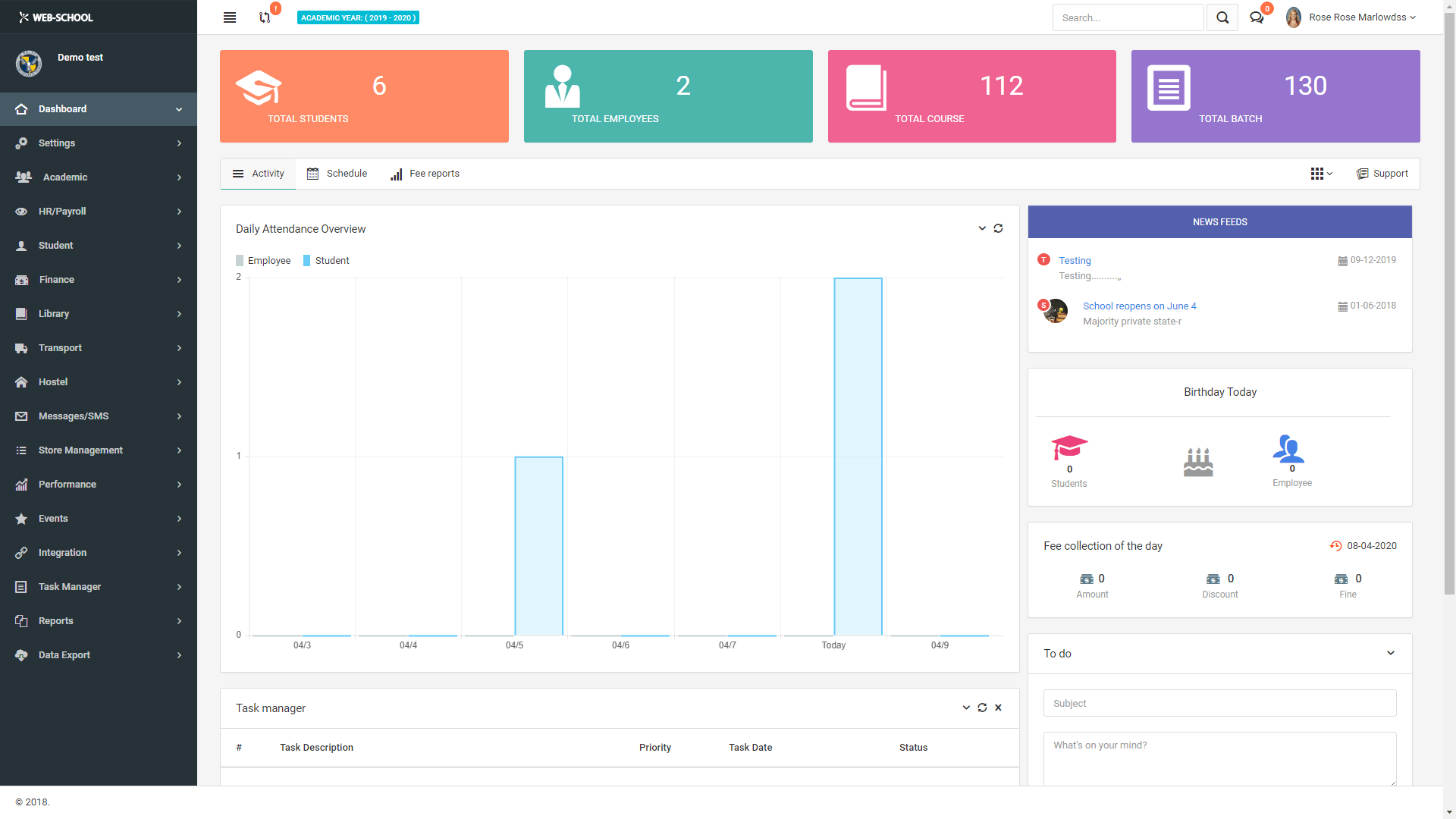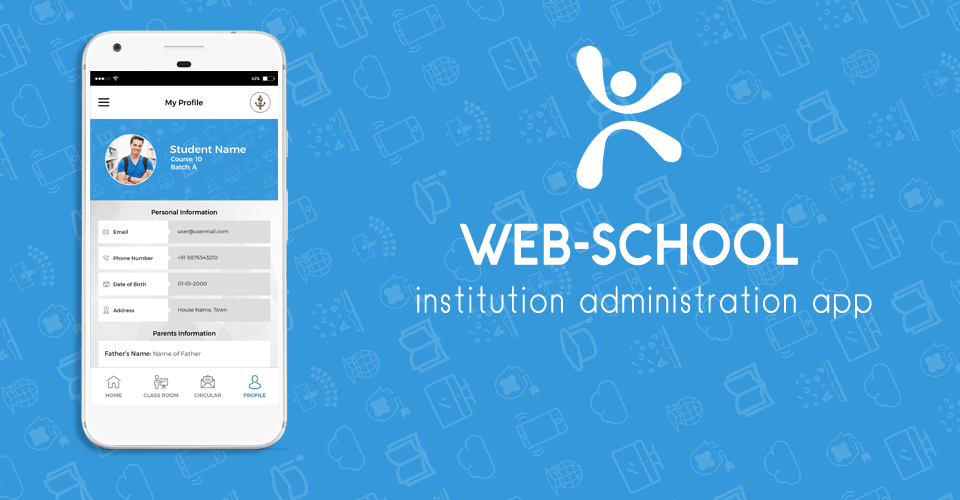
How School Management Systems Help Implement ERP in Educational Institutions
April 8, 2020
Digital Intelligence Quotient: Making the Internet Children-safe
April 30, 2020The technology has reshaped and remodelled all the familiar, analogue social institutions and approaches. Its impact has seeped into the most fundamental aspect of man’s life, i.e. education. Digital Interactive Learning has become a global phenomenon; it boasts an army of tech-savvy pupils, parents and teachers who perceive the internet and its by-products as a useful tool to build a sturdy academic foundation.
Why is Digital Interactive Learning trending as an educational approach?
Computers and the internet have together given birth to a virtual empire of information. E-learning is a method of imparting and receiving knowledge by tapping into the resources available online. The data available on the internet are scattered, disorganized and massive in quantity. Information, both required and superfluous, is available online as a jumbled mix. E-learning sources like educational apps consolidate the information pertinent to specific topics and subjects for the target groups of learners under one roof. They act as interactive mediums where students and tutors assemble to exchange information.
What are the popular topics in e-learning
E-learning opens the avenue to learn from stimuli induced by simulations generated in the virtual world. Some of the trending topics in the e-learning arena are
- Role-plays & Scenarios: E-learning creates a flexible environment of the learner to experience various virtual scenarios through role-playing. The dynamicity challenges the user and enhances the stock responses to various stimuli.
- Digital learning: The E-Learning world presents a plethora of digital possibilities to facilitate an exceptional learning experience like the incorporation of gamification and mobile learning. Within organizations, such methods are used to ascertain faculty development,
- Templates, Videos and Cloud Authoring: The immediate goals of e-learning methodologies are to maximize information exchanges within the short span of time in the most effective way. Digitization helps accomplish these by creating a sentient audio-visual experience using various multimedia tools like templates, videos and presentations. Cloud authoring ensures the fast dissemination of the learning materials and obliterates the barriers of place and time.
Why is Digital Interactive Learning considered to be the best innovative technique in e-learning?
Digital interactive Learning boasts all the benefits of the internet and modern-day technologies.
- Ease of accessibility: Ease of access to all is the most exalted advantage of e-learning techniques. Any aspiring learner from any part of the world can access e-learning tools such as apps and tutorials at their convenience.
- In live online sessions, learners can easily interact with the trainer and can ask questions. Emulating classroom models, an online learner can also engage in discussions with the tutor to clarify doubts during live sessions eliminating the need for physical presence at the same location.
- Courses offered as e-learning packages are easy to partake in: The course materials are made accessible by cloud sharing, and the learner can download and access them any location. Assessment and evaluations are also undertaken online, which include examinations and assignments through dedicated cyber portals.
- e-Learning is more affordable: When compared to on-campus courses, e-learning is easy on the pocket. Ambitious students can even take online courses from prestigious academic institutions overseas from the comfort of their home.
e-Learning apps
The following are some of the trending and top-rated Digital Interactive Learning apps:
1. Kahoot (Android/ iOs)
Kahoot is the current hit app amongst teachers who want to engage the students actively in lectures by transforming classrooms into a field of games. Kahoot websites assist teachers in creating fun games with the questions they have prepared. Once the interactive quiz session begins, the students have the Kahoot app installed on their mobiles as a buzzer indicator to give the answers to the questions.
2. Google Classroom (Android/ iOs)
Google Classroom acts as a consolidated space of resource sharing. It is used by teachers to ensure quick access to students’ assignments and other study materials in Google Drive. It also acts as a channel of information exchange between teachers and students.
3. Teach Learn Lead (Android/ iOs)
Teach Learn Lead can be described as a networking platform for teachers from various educational institutions to connect and interact with each other. Such interactions help teachers discuss shared teaching concerns and also form uniform teaching methodologies. The more experienced teachers also act as mentors to new teachers. The networking of teachers also helps cultivate a niche of knowledge exchange between teachers of the same subjects.
4. Seesaw (Android/ iOs)
Seesaw is a platform for parents to evaluate the accomplishments, merits and progress of their children. Students compile the best of their projects, papers and presentations in the form of a portfolio that showcases their strengths and nature of academic growth and improvement.
Teachers also update with annual analysis of the students for their parents to assess the progress and weaknesses of the students.
5. Slack (Android/ iOs)
Slack is a text-based application that facilitates the interactions between college students and their respective professors past school hours. It is a messaging medium that allows the circulation of important announcements, notifications and even for instant communication during emergencies.
Why have schools not managed to implement a DIL based pedagogic culture?
The advanced and progressive digital approaches to Learning have not yet penetrated deep into the digit academic docc=tines and dogmas of the past.
- Impersonal and Alienating: Advocates of the classroom-learning style assert that the absence of physical presence at the site of Learning and lack of interpersonal interaction between peers and mentors in e-learning impede effective retention of knowledge and skills.
- Rigidity: e-Learning materials are like films; they are rigid and lack the flexibility and vitality present in the live classroom learning model. Classroom learning is like a stage performance; they are live, spontaneous and involve substantial interpersonal interactions between everyone present there. The immutable nature of digital content lacks the spirit invoked in passionate classroom debates.
- Lack of input from teachers: The glaring disadvantage of e-learning is the limitation on the courses that can be offered as such. For subjects that require physical presence like mechanical engineering or bioengineering, there is a need for laboratory experiments under the supervision of a tutor. For students majoring in Human Resources, the most significant aspect of social and communication skills can not be cultivated. In other words, e-learning that happens in the absence of a subject expert directly delivering lectures is unable to make any momentous transformation on the user.
- Muted progress: E-learning controls the rate of progress made by the learner. In the classroom environment, knowledge transpires as spontaneous activity. Beyond the scope of predesigned video lessons or presentations, in-classroom teachers and students can delve into related subjects and learn in-depth about associated topics without any premeditated plan to do so.
Conclusion
E-learning is an approach still under work. Time and cost efficiency, ease of access, elements of fun, etc. are some of the attractive features of the same. Yet, it is not developed enough to replace on-campus educational practices completely. However, most educational systems have actively integrated the most relevant digital learning tools into the existing training models.



